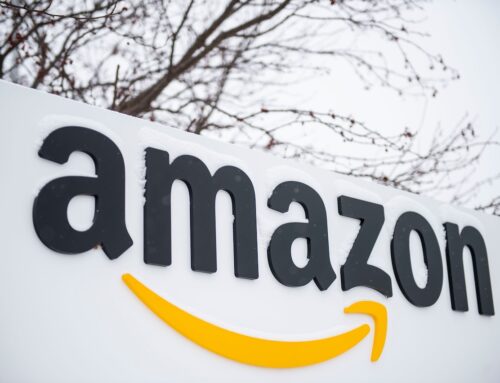Brazil’s Green Transition: Many Conundrums Ahead
November 7, 2025
Brazil’s journey toward a sustainable future is marked by striking contradictions. While around 90 per cent of its electricity generation comes from renewable sources, it also ranks as the world’s sixth-largest greenhouse-gas emitter, mainly due to its agricultural sector. The country boasts the planet’s second-largest forest area and unparalleled biodiversity, yet its vital rainforests are vanishing at an alarming rate owing to deforestation. Under the current administration, efforts to address these paradoxes have intensified, aiming to position Brazil as a leader in global green initiatives while fostering economic growth to tackle deep regional and social inequalities. However, these ambitions lack unanimous political support, rendering them vulnerable to shifts in power. As the host of the 2025 UN Climate Change Conference (COP30), Brazil has a unique opportunity to showcase its progress and secure international backing for its environmental goals.
Brazil’s energy mix has long favoured clean, renewable sources, which today account for about 90 per cent of its electricity generation—a figure that stands out among G20 nations. Hydropower dominates, with an installed capacity of around 109 GW, providing roughly 60 per cent of the country’s electricity generation and accounting for about 60 per cent of total installed capacity, making Brazil the world’s second-largest hydropower producer after China. Yet, this reliance poses risks: prolonged droughts and forest loss reduce river flows, threatening energy stability. To mitigate this, the government plans to cut hydropower’s share from 83 per cent in the early 2000s to 46 per cent by 2031, diversifying into wind and solar, which jumped from 10 per cent of electricity generation in 2019 to 24 per cent in 2024. Despite these advances, rising electricity demand may temporarily boost fossil fuels such as natural gas, potentially increasing emissions from the electricity sector, which currently contributes about 9 per cent of total national figures.
Biofuels further strengthen Brazil’s greening ambitions, with a history dating back to 1975. As the world’s second-largest ethanol producer and third-largest biodiesel maker, the country currently mandates 30 per cent ethanol blending in gasoline and 15 per cent biodiesel in diesel. While transportation only accounts for about 10 per cent of overall emissions (ie, 5 percentage points below the global average), opportunities exist for further reductions through the expanded use of sustainable fuels and electrification. Paradoxically, Brazil remains a top-ten oil producer, with state-owned Petrobras planning $111 billion in investments through 2029 to expand extraction, aiming to put the country among the world’s top five producers. Officials argue that oil revenues help fund green and social programmes, but critics note that only 0.06 per cent of Petrobras’s oil income currently supports the energy transition, and exploring new fields and burning their oil and gas could result in emissions volumes equivalent to years of national totals.
Agriculture and land use dominate Brazil’s emissions profile, accounting for 70–75 per cent of greenhouse-gas emissions while representing only 5–6 per cent of the country’s GDP. Nearly half of these emissions stem from land-use changes, primarily deforestation, which is largely driven by the expansion of cattle ranching—a practice that also generates significant methane emissions. Cattle-related activities are linked to 57 per cent of emissions, with the food sector as a whole contributing 74 per cent. Since 1990, livestock growth has had a considerable share in rising emissions, and the sector’s powerful lobby hinders reforms. Yet agriculture also supports biofuel production through soy and sugarcane, which helps meet energy goals.
Covering 60 per cent of Brazil’s territory, its rainforests are home to between 15 and 20 per cent of the world’s species and store between 150 and 200 billion tons of carbon, lending them global importance. The fate of these forests shapes national emissions and hydropower viability. Deforestation, driven by farming, ranching, mining, and infrastructure development, surged under former President Jair Bolsonaro (2019–2022) due to weakened enforcement. The subsequent Luiz Inácio Lula da Silva administration has sought to reverse this trend. Recent efforts, including satellite monitoring and strengthened protections, reduced Amazon deforestation by about 31 per cent in the past year, reaching a nine-year low. These measures restored international trust and revived the Amazon Fund with contributions from donors such as Norway and Germany. Despite this progress, droughts and wildfires in 2024 caused the highest tree loss since 2016, underscoring the region’s vulnerabilities to climate change.
Brazil’s Paris Agreement pledges have clearly evolved over time. The initial commitments made in 2015 targeted a 37 per cent emissions cut by 2025 from 2005 levels. However, these commitments were updated in 2023 and 2024 to include absolute caps: 1.32 GtCO₂e by 2025 and 1.2 GtCO₂e by 2030 (representing a 48.4 per cent and a 53.1 per cent reduction, respectively), with a target of 59–67 per cent by 2035. The government now aims for net-zero emissions by 2050, a decade ahead of prior plans, and includes sector-specific targets. Critics argue that these goals fall short of 1.5°C alignment, lack a transparent pathway, and would partly rely on carbon credits.
‘Recent efforts, including satellite monitoring and strengthened protections, reduced Amazon deforestation by about 31 per cent’
The 2023 Plano de Transformação Ecológica addresses the greening vs development dilemma, known to many developing countries, by focusing on six key areas: sustainable finance, technology, bioeconomy, energy transition, circular economy, and infrastructure. This plan promotes green bonds, carbon markets, research and development, vehicle electrification, biofuel boost, ending deforestation, restoring forests, and sustainable agriculture. It is estimated that net-zero plans could attract $6 trillion in investment and spending between 2024 and 2050, cumulatively equivalent to 6.6 per cent of Brazil’s total GDP.
Additionally, the government aims to advance the energy transition by involving ordinary citizens in the decision-making process. A key platform for participation is Brasil Participativo, an initiative that has already mobilized over one and a half million people, giving them the opportunity to voice their opinions on climate issues. Despite the political commitment to avoid increasing social inequalities and regional disparities, the country’s long-standing corruption, lobbying, and exploitation practices could undermine effective execution.
Internationally, Brazil advocates for the Global South’s ‘common but differentiated responsibilities’, emphasizing that developed countries have a greater historical responsibility for emissions while developing countries need the room for further development. This rhetoric is part of a broader strategy to secure funding and technology from developed nations, which already assist the country in its efforts to curb deforestation. As the host of COP30, Brazil is pushing for an additional $7 billion annually for forest protection through the Tropical Forests Forever Facility and $1.3 trillion yearly to support energy transitions in developing countries. The country’s sheer size and the global significance of its rainforests can lend weight to these proposals.
Brazil’s energy transition is marked by uneven progress. Highlights include the implementation of deforestation curbs and the robust growth of renewable energy generation, with wind and solar accounting for 34 per cent of electricity in August 2025. However, the country ranks 28th in the Climate Change Performance Index, among the medium performers, while the Climate Action Tracker deems its climate targets insufficient. Additionally, Brazil must also navigate many risks along the way: agricultural reforms lag, oil expansion continues, and political instability looms, as evidenced by Bolsonaro’s former consideration of withdrawing from the Paris Agreement. Corruption, economic fragility, and regional disparities also threaten to erode support for green policies, while wildfires and droughts continue to devastate forests.
All these factors may have ominous implications for achieving emission-reduction targets. However, by leveraging COP30, the country could attract global aid and position itself as a green industrial hub and a model for the Global South. Going forward, Brazil should resolve its conundrums by dismantling entrenched economic structures while ensuring just growth and sustained political and regulatory stability.
Related articles:
Search
RECENT PRESS RELEASES
Related Post



